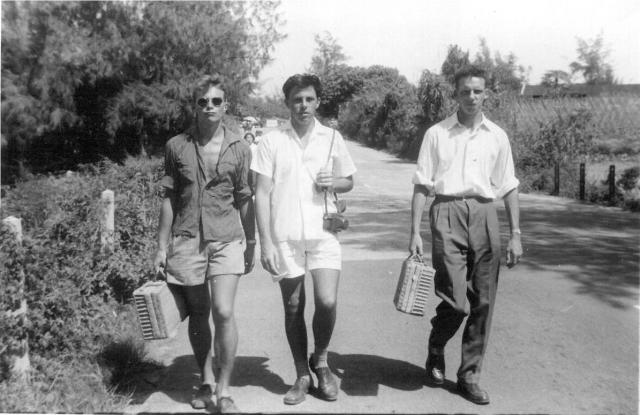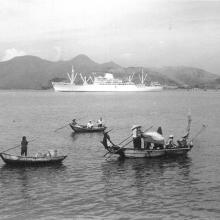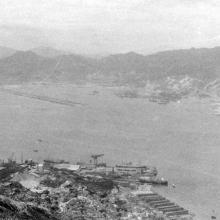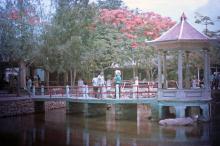This looks like the stretch of road between the Big Wave Bay junction and Shek O villkage. Left to right Norman Smith, John Hayward and unknown. Most of us bought the wicker baskets. Mine is still going strong storing some of my Hong Kong bits and pieces. (Andrew S)





Comments
Wicker Baskets
Thank you Andrew. Wicker was a common material used for making book bags, travel luggage, baby carriage, and furniture. Yours in this photo are thicker than my primary school book bag, its design more elaborate and rings a nostalgic bell. That wasn't me in the photo, however, the photo was taken when I was also about his age, and the scene was near my relatives home in Shek Kip Mei shanty town. Little things like this enable us to take a glimpse of our own younger days. Regards, Peter
Hi Peter,
Hi Peter,
As well as my old wicker basket, I have one of the amazing bamboo umbrellas that I bought one day in 1958 when I was caught in a sudden heavy shower ‘down town’. Then, and even now 61 years later the rather smelly fish glue(?), used to waterproof the paper, still has a faint but very nostalgic ‘Hong Kong’ smell and it sticks whenever I open it. This has resulted in a few tears which have been repaired with transparent sticky tape. I haven’t used it since 1958, but occasionally open it to show people how ingenious it is. I believe that it cost me just 1HK$. I’ll take a photograph for my gallery later today.
Amazing that you might have been one of the small boys with whom my friends and I tried to talk - except that we never ventured as far as the Shek Kip Mei shanty town. While having plenty of pals, many of us missed the normal contact with our families and enjoyed occasional attempts at communication with the children we met. Your photograph suggests that Shek Kip Mei had been rebuilt after that huge fire of c1953 described by Martin Booth.
Somebody should write an account of what became of the poor people who endured living in all those squatter/shanty communities and who eventually found a good living and even relative prosperity in Hong Kong but also in the U.K. and possibly Canada and Australia. Such a book would provide a wonderful dimension to social history. I’m too old and distant to do it! Best wishes, Andrew